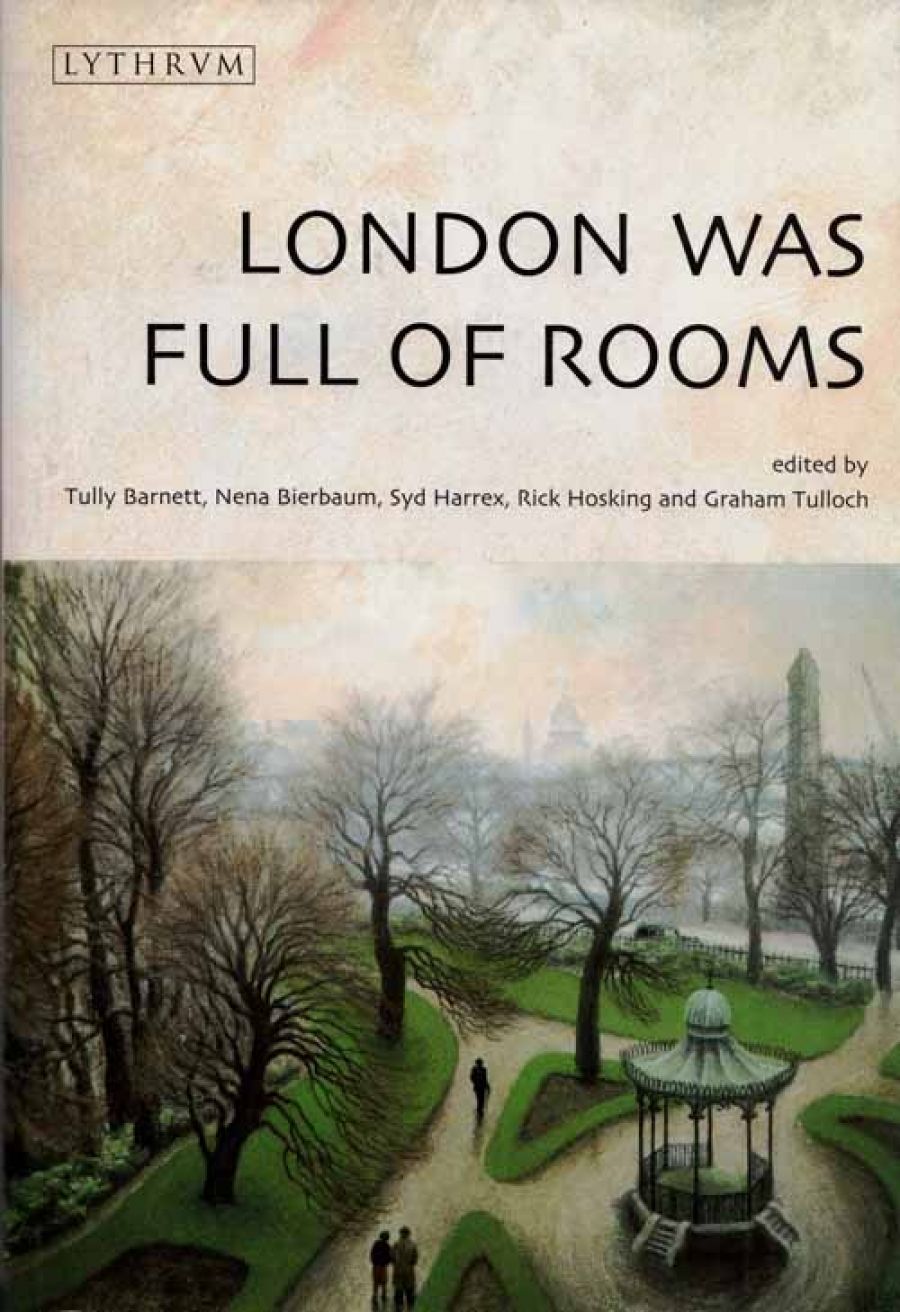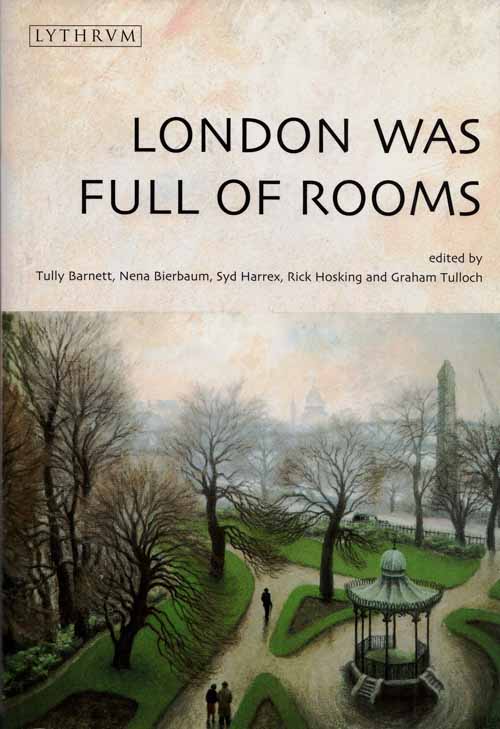
- Free Article: No
- Contents Category: Literary Studies
- Custom Article Title: 'Have you a family?'
- Review Article: Yes
- Article Title: 'Have you a family?'
- Online Only: No
- Custom Highlight Text:
This digressive collection of essays, extracts, cartoons and poems is unified by an interest in colonial and post-colonial responses to London. It stems from a 2003 conference, ‘Writing London’, organised by Flinders University’s Centre for Research in the New Literatures in English (CRNLE). Part 1 focuses on the Malaysian writer Lee Kok Liang (1927–92), in particular his posthumously published and wry first novel, London Does Not Belong To Me (2003), from which this book takes its name: ‘London was full of rooms. I went from one to the other. Slowly I adjusted myself and lived the life of the troglodyte, learning the tribal customs of feints and apologies.’ Part 2 comprises examples of, and critical and scholarly essays relating to, literary, journalistic, artistic and cinematic responses to London (mostly by Australians).
- Book 1 Title: London Was Full of Rooms
- Book 1 Biblio: Lythrum Press, $29.95 pb, 282 pp, 1921013087
- Book 1 Cover Small (400 x 600):

- Book 1 Cover (800 x 1200):

Lee Kok Liang’s published oeuvre includes collections of short stories and the short novel Flowers in the Sky (1981). He wrote London Does Not Belong to Me soon after studying law in Melbourne and London in the early 1950s. In it a young and painfully self-aware Malayan student grapples with London. The story is dominated by people, mostly other expatriates, rather than by place. The essays collected here include perceptive discussions by Syd Harrex and Bernard Wilson, who co-edited London Does Not Belong To Me for publication. Perhaps the most revealing essay is by John Barnes, a friend of Lee’s since their student days in Melbourne. Barnes offers an affectionate, thoughtful and very personal introduction to Lee, and provides important context, including background on the complexities of Malayan/Malaysian society and Lee’s own struggle through that world as a lawyer and politician pining to write full-time. Barnes also reminds us of old realities: ‘It may be difficult for both Australians and Malaysians of today to comprehend how close the relationship between the two countries seemed then, and how younger Malayan intellectuals counted on Australian support in creating a democracy after the departure of the British.’
Although the various critical discussions of Lee’s work are instructional, and relevant to wider themes relating to otherness and the imperial centre, some knowledge and appreciation of Lee’s writing is necessary fully to assess these critical appraisals (including how apt the linking of Lee’s work to broader post-colonial theorising might be). For readers new to Lee, some relief is offered by a typescript extract from his London journal, which he named Sketches & Vignettes & Brushstrokes. It consists of Lee’s vivid and amusing description of a meeting with Stephen Spender in the offices of Encounter:
We then loosened up. He asked me where I came from etc. Something burst inside me, and soon I found myself talking to him – about my difficulties in writing – how I had to take care of the children – ‘have you a family?’ – not the children, but my sisters, and when I get home I won’t have much time – ‘where are you working?’ ‘At the bar.’ ‘What!’ ‘Oh, I practise at the bar.’ ‘Selling drinks.’ ‘Oh no we have no pubs there.’ Some how this got through to him at last. So on and on.
Lee’s keen and often biting observations of others, combined with a self-deprecation based on a clear understanding of his awkwardness and outsider status, is seen to sustained effect in London Does Not Belong To Me. As Lesley Wyndram’s essay notes, the tone and form of the journal is very different from his fiction (and London Does Not Belong to Me is fiction, not autobiography). Still, the journal extract does legitimise the reverent tone towards Lee that characterises these discussions.
Part 2 of this book ranges far and wide, from Catherine Helen Spence to Patrick White to Barry McKenzie. Peter Morton’s introductory chapter locates this book in the context of the recent ‘flood’ of critical writings about colonial and post-colonial representations of London. While Part 2 is not particularly cohesive, this is not too distracting. Indeed, the table of contents need only be a guide – it is a pleasure to jump from a discussion of Catherine Martin to Bruce Petty, then back to Walter Murdoch. Both the extracts and poems, and the scholarly discussions, which are reasonably accessible to non-specialists, invite further and deeper investigation. Although there are occasional references (for example, see Graham Tulloch), more attention to contrasting Lee Kok Liang’s London experiences with those of Australians would have been welcome.
The preface concludes: ‘Above all, this book represents the myriad of complex relationships between writers and London, and shows that, despite a changing world, the cultural richness of London continues to be balanced and assessed against exclusion, struggle, even humiliation, and a process of adjustment that some will never complete.’ While London Was Full of Rooms does fulfil this intention, at its heart it is a homage to the life and writing of Lee Kok Liang.


Comments powered by CComment